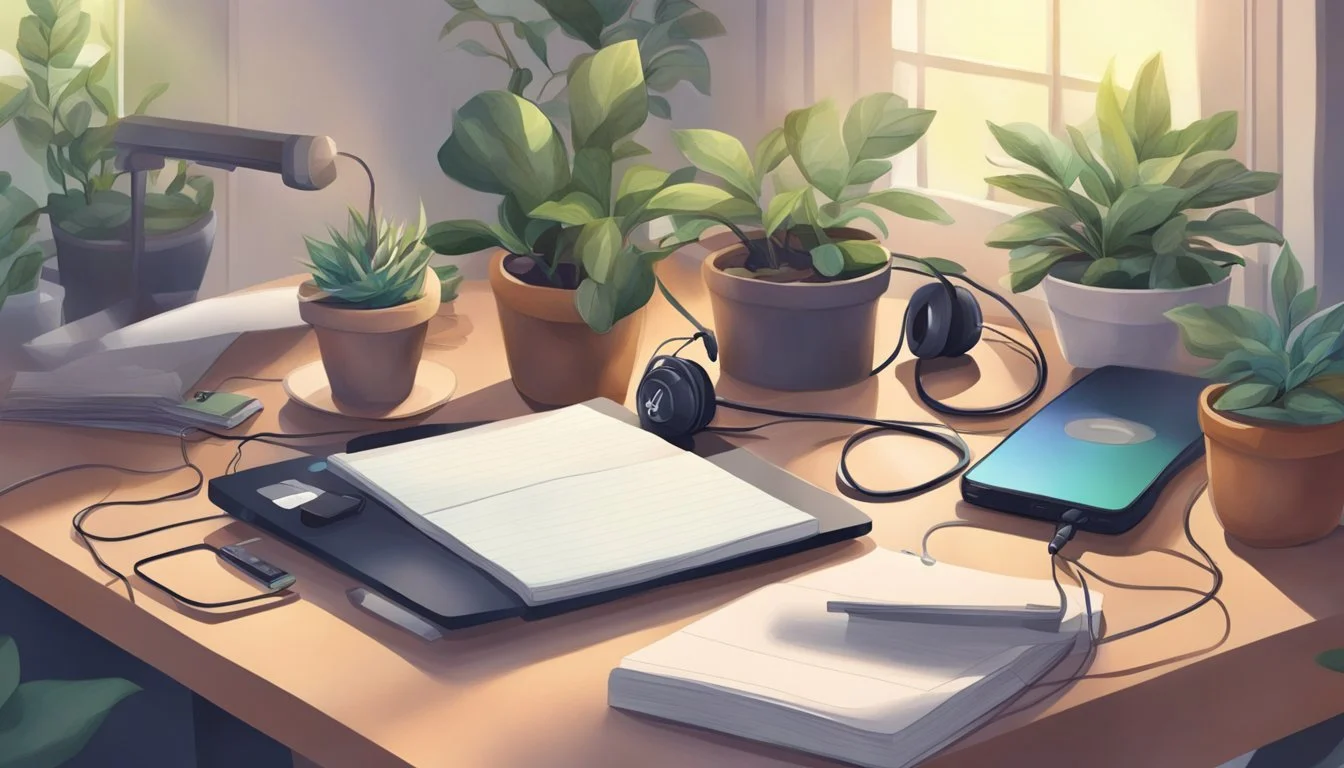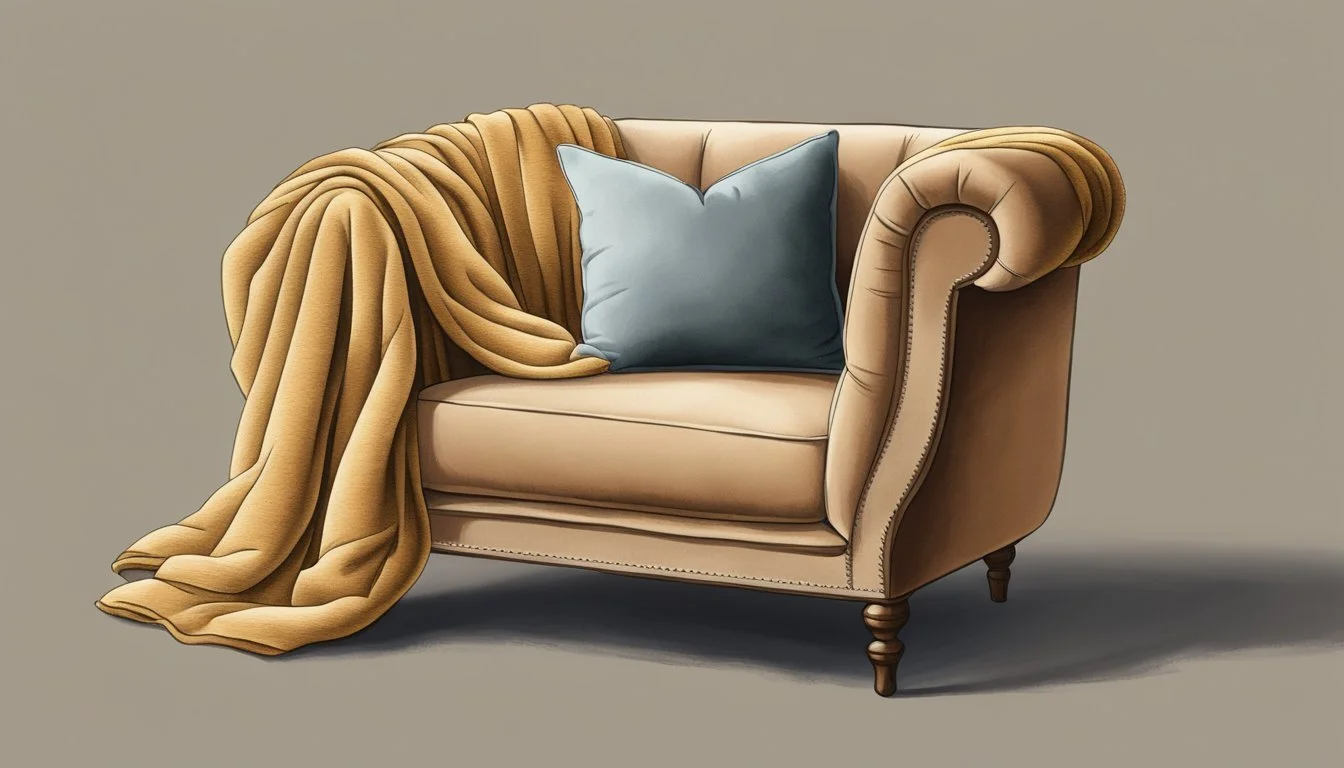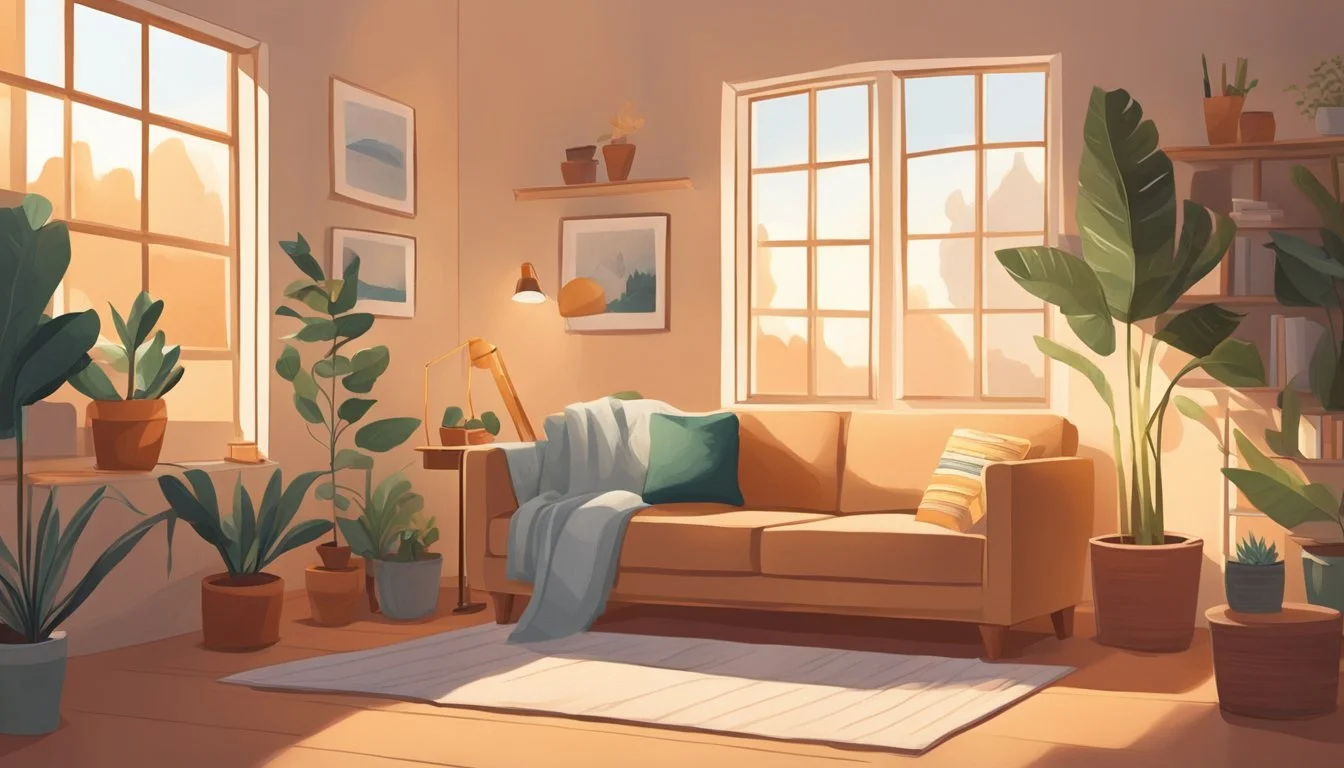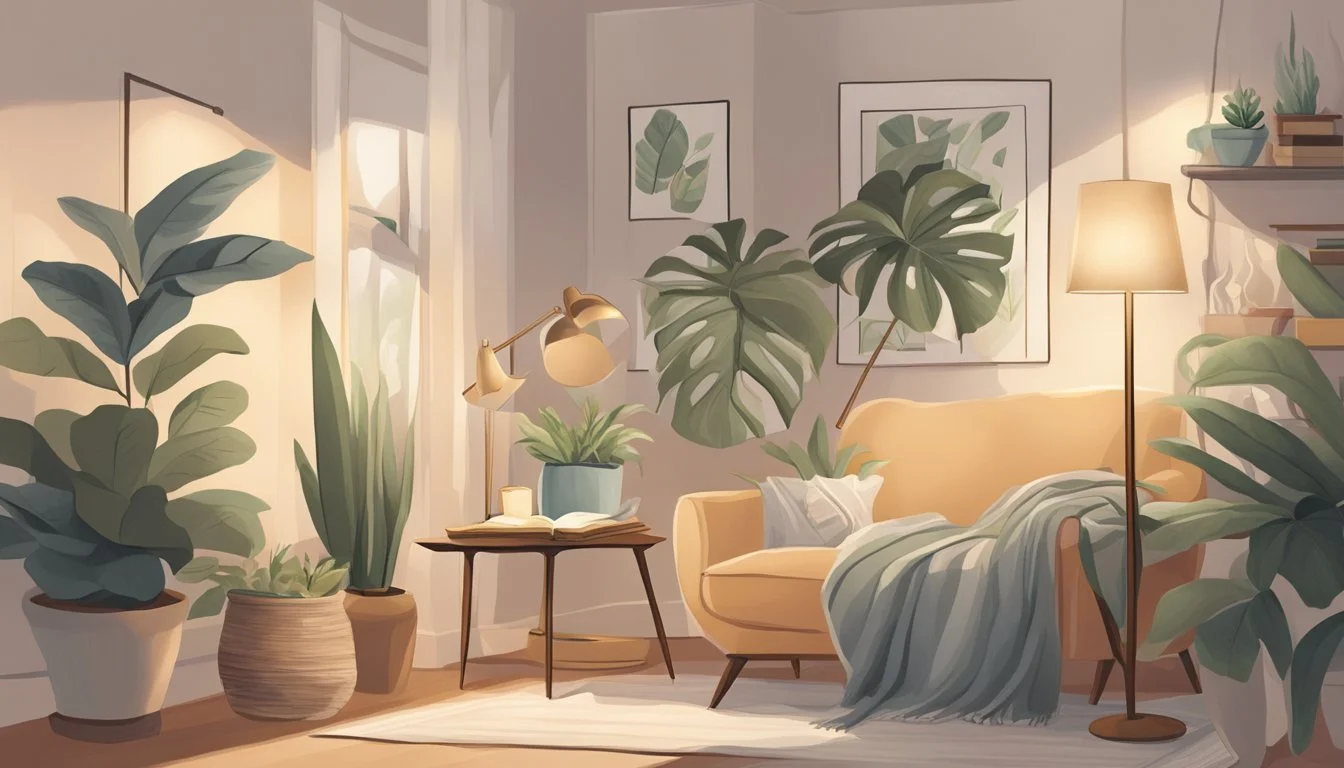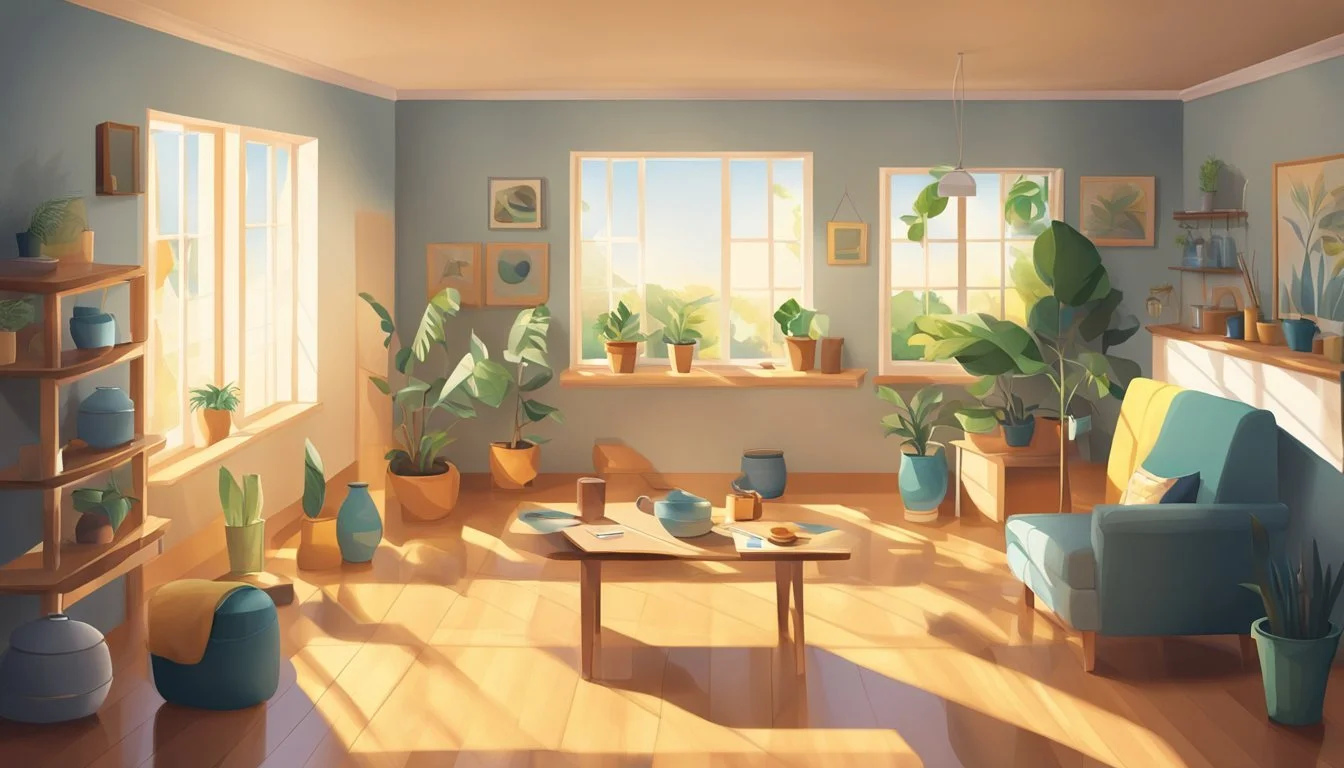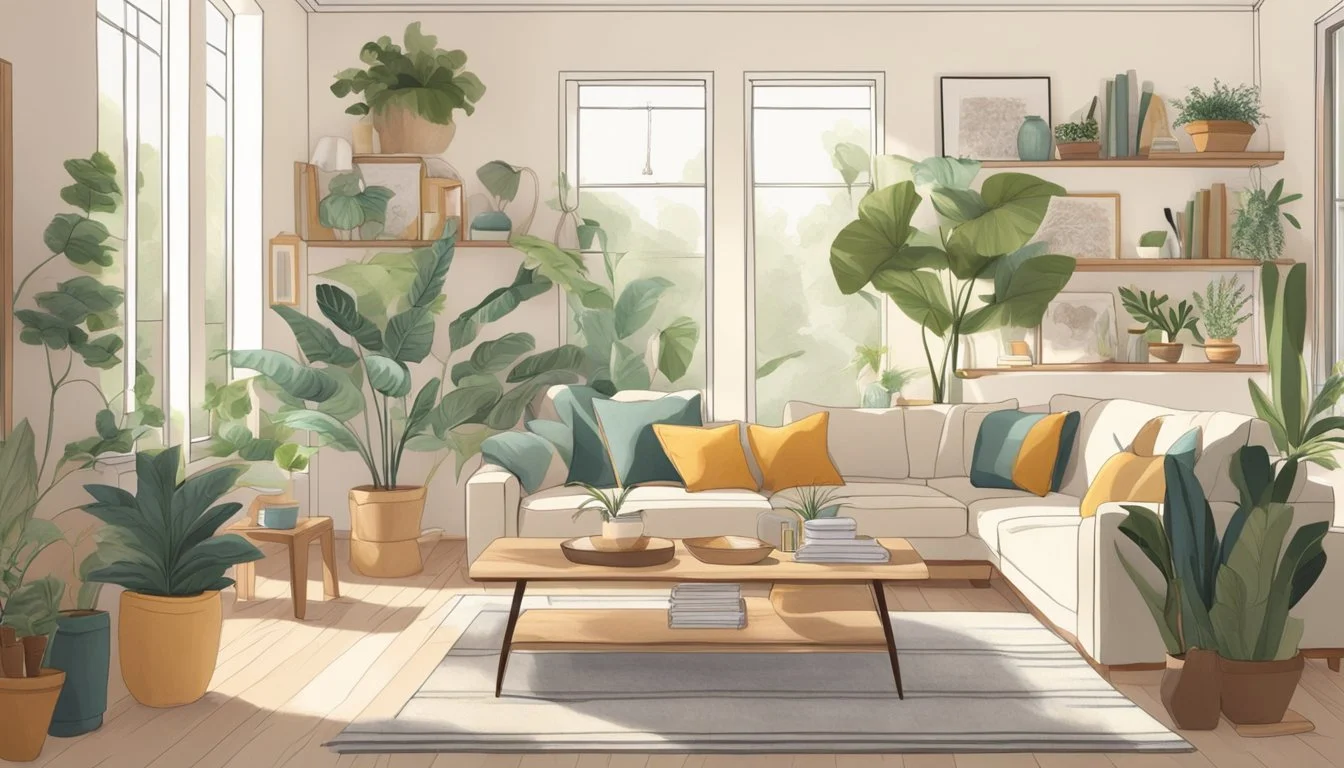15 Everyday Objects That Are Secretly Affecting Your Mood
Hidden Influences in Your Home and Workspace
Our surroundings are filled with everyday objects that silently influence our emotional state. From the colors of our walls to the clutter on our desks, these common items can subtly shape our mood throughout the day.
Understanding the impact of these seemingly innocuous objects empowers us to make small changes that can significantly improve our daily emotional wellbeing. By becoming aware of how our environment affects us, we can create spaces and routines that promote more positive feelings and enhance our overall quality of life.
1) Scented Candles
Scented candles are more than just decorative items; they can significantly influence our mood and emotions. The fragrances emitted by these candles have the power to affect our psychological state in various ways.
Different scents can evoke specific emotional responses. For example, lavender is known to promote relaxation and calmness, while citrus scents can boost energy and alertness.
Scented candles can also trigger memories and associations. A particular fragrance might transport someone back to a pleasant moment in their past, instantly improving their mood.
The act of lighting a scented candle can create a soothing ritual, helping to reduce stress and anxiety. This simple action can signal the brain to switch into a more relaxed state.
In workspaces, certain scents may enhance focus and productivity. Peppermint and rosemary, for instance, are believed to improve cognitive performance and concentration.
Scented candles can play a role in mindfulness practices. Focusing on the scent while practicing deep breathing exercises can promote a sense of presence and calm.
By carefully selecting scents, individuals can create environments that support their desired emotional states, whether that's relaxation, motivation, or comfort.
2) Dim Lighting
Dim lighting can significantly impact mood and emotional well-being. Lowering light levels often creates a calming and relaxing atmosphere, helping to reduce stress and promote a sense of tranquility.
Many people find dim lighting conducive to unwinding after a long day. It can signal to the body that it's time to slow down and prepare for rest, supporting natural circadian rhythms.
In social settings, dim lighting can foster intimacy and enhance the ambiance. Restaurants and bars frequently use low lighting to create a cozy, inviting environment for patrons.
Dim lights may also influence decision-making and behavior. Some studies suggest that people in dimly lit spaces may feel less inhibited and more likely to make indulgent choices.
While dim lighting can be beneficial, it's important to strike a balance. Excessively dark environments might lead to eye strain or fatigue, especially when engaging in detail-oriented tasks.
Adjustable lighting options, such as dimmers, allow for greater control over the ambiance and mood of a space. This flexibility enables individuals to tailor their environment to suit different activities and emotional needs throughout the day.
3) Background Music
Background music subtly influences our mood and behavior in everyday settings. Whether in stores, restaurants, or offices, carefully selected tunes can shape our emotions and actions.
Upbeat, fast-tempo music tends to energize people and increase their pace. This effect is often utilized in retail environments to encourage quicker shopping and higher spending.
Conversely, slow, relaxing melodies can promote calmness and reduce stress levels. Many spas and wellness centers use soothing background music to enhance relaxation for their clients.
In workplaces, background music can impact productivity. Classical music has been shown to improve focus and cognitive performance for some individuals during complex tasks.
The genre and volume of background music also play crucial roles. Loud or dissonant music may create discomfort or distraction, while familiar tunes can evoke nostalgia or positive associations.
Restaurants often curate playlists to complement their ambiance and influence diners' experiences. Soft jazz might encourage lingering over meals, while upbeat pop could promote quicker turnover.
4) Cluttered Space
A messy, disorganized environment can significantly impact mood and mental well-being. Clutter creates visual chaos that can overwhelm the brain and increase stress levels.
Excessive items scattered around living spaces make it difficult to focus and concentrate. This cognitive overload can lead to feelings of anxiety and mental fatigue.
Clutter may also contribute to feelings of guilt or shame about one's inability to maintain order. These negative emotions can dampen mood and self-esteem over time.
Physical clutter often correlates with mental clutter. A disorganized space can make it challenging to relax and unwind after a long day.
Removing excess items and organizing spaces can have a positive effect on mood. A tidy environment promotes a sense of calm and control.
Decluttering allows for better functionality in daily life. When everything has its place, daily tasks become easier and less stressful to manage.
Creating open spaces through decluttering can improve creativity and productivity. A clean workspace allows the mind to focus on important tasks without distractions.
5) Certain Fabrics
The fabrics we choose to wear can have a significant impact on our mood and well-being. Natural fibers like cotton, linen, and silk are often associated with comfort and positive emotions due to their breathability and softness against the skin.
Synthetic materials may cause discomfort or irritation for some people, potentially leading to negative mood changes. Textures also play a role - smooth fabrics can feel soothing, while rougher textures may create agitation.
Color psychology extends to fabrics as well. Bright, vibrant hues in clothing can boost energy and mood, while muted or dark tones may have a calming effect.
Innovative "psychotextiles" are being developed that can change patterns, potentially allowing wearers to adjust their clothing to influence their emotional state. These fabrics toggle between repeating and non-repeating designs.
The smell of fabric can affect mood too. Clean, fresh-scented clothes tend to improve one's outlook, while unpleasant odors can dampen spirits.
6) Photos of Loved Ones
Photographs of family and friends can have a profound impact on mood and emotional well-being. Research published in the journal 'Emotion' found that participants reported more positive emotions and reduced stress after viewing pictures of loved ones.
These images serve as powerful reminders of meaningful relationships and cherished memories. They can trigger the release of oxytocin, often called the "love hormone," which promotes feelings of bonding and attachment.
Looking at photos of loved ones may provide comfort during difficult times or periods of loneliness. This simple act can boost positive affect and decrease negative emotions, offering a quick mood lift.
For those experiencing mild depression or anxiety, keeping pictures of family and friends nearby can serve as a visual anchor to positive emotions. These images can act as silent motivators, reminding individuals of their support network.
In workplaces or personal spaces, strategically placed photos of loved ones can create a more positive environment. They serve as visual cues that can momentarily transport the viewer to happier moments, potentially improving overall mood throughout the day.
7) Room Colors
The hues surrounding us in our living spaces can profoundly influence our emotions and behavior. Different colors evoke distinct psychological responses, subtly shaping our mood and energy levels throughout the day.
Warm colors like red and orange tend to stimulate and energize. They can increase heart rate and create a sense of excitement or urgency. These shades may be ideal for social areas or spaces meant for active engagement.
Cool colors such as blue and green generally have a calming effect. They can lower blood pressure and promote relaxation. These colors are often used in bedrooms or study areas to foster tranquility and focus.
Lighter shades make rooms feel more spacious and airy. They can brighten moods and create a sense of openness. Darker tones, on the other hand, can make spaces feel more intimate and cozy.
Neutral colors like beige, gray, and white provide a versatile backdrop. They can create a sense of balance and allow other elements in the room to stand out. These shades are often used to create a timeless, sophisticated atmosphere.
8) Art Pieces
Art pieces in our daily environments can subtly influence our moods and emotions. Paintings, sculptures, and other visual artworks have the power to evoke strong feelings and alter our state of mind.
Colors used in artworks play a significant role in this emotional impact. Red can stimulate feelings of passion or energy, while blue might induce calm or melancholy. The subject matter of a piece also affects viewers' emotions.
Abstract art can spark creativity and contemplation. Realistic landscapes may provide a sense of serenity or nostalgia. Portraits can elicit empathy or connection with the subject.
The placement of art in a space matters too. A large, vibrant piece in a living room can energize the area, while subtle, soothing artwork in a bedroom may promote relaxation.
Even small decorative objects like sculptures or ceramics can influence mood. Their textures, shapes, and materials can create different sensory experiences and emotional responses.
Art's impact on mood is highly personal. What resonates with one person may not affect another in the same way. This makes choosing art for living and working spaces an important consideration for emotional well-being.
9) Indoor Plants
Indoor plants are more than just decorative elements. They have a profound impact on our mood and well-being. Studies have shown that having plants in our living spaces can reduce stress levels and promote relaxation.
Certain plants are particularly effective at boosting mood. The peace lily, with its bright green leaves and white blooms, has been linked to reduced stress and improved mood. Its natural calming effect makes it an excellent choice for living areas or bedrooms.
Lavender is another mood-enhancing plant. Its soothing scent can help reduce anxiety and promote better sleep. Placing a small lavender plant on a bedside table or in a home office can create a more tranquil environment.
For those seeking air-purifying benefits, the Kimberly Queen Fern is an excellent option. This elegant plant with upright fronds is particularly effective at removing indoor air pollutants, which can indirectly improve mood by creating a healthier living space.
Colorful plants like aglaonema can add cheer to any room. Their vibrant leaves with splashes of pink, red, and white on a green background can instantly brighten a space and lift spirits.
10) Air Fresheners
Air fresheners play a subtle yet significant role in influencing mood and productivity. These household staples come in various forms, including aerosols, plug-ins, diffusers, and room sprays.
Certain scents have been shown to have positive effects on mental well-being. Lavender, chamomile, and jasmine are known for their stress-reducing properties, potentially lowering heart rate and blood pressure.
The right fragrance can create a calming atmosphere, promoting relaxation and improving overall mood. Some air fresheners are designed to mimic natural scents, which can evoke positive memories or emotions.
However, artificial fragrances may cause irritation or allergic reactions in some individuals. It's important to choose air fresheners that suit personal preferences and sensitivities.
Modern air fresheners offer customizable options. Smart diffusers, like the Aera Smart 3.0, allow users to control scent intensity and timing via smartphone apps.
When selecting an air freshener, consider factors such as room size, desired scent, and application method. Natural options like activated charcoal bags can effectively absorb odors without adding fragrance to the air.
11) Mirror Placement
Mirror placement plays a significant role in influencing mood and energy within a space. The positioning of mirrors can affect how light is reflected and how a room feels.
Placing mirrors opposite windows amplifies natural light, creating a brighter and more uplifting atmosphere. This can boost mood and energy levels, especially during darker months.
In bedrooms, mirrors facing the bed may disrupt sleep quality. Some find it unsettling to see reflections while trying to rest. Moving mirrors to side walls can create a more peaceful sleeping environment.
Mirrors in dining areas can symbolically expand the space and abundance. This placement is believed to enhance feelings of prosperity and contentment during meals.
Avoid placing mirrors directly across from the front door. This arrangement may create a sense of energy being pushed back out, potentially leading to feelings of stagnation or missed opportunities.
Strategically positioned mirrors can make small spaces feel larger and more open. This can reduce feelings of confinement and increase a sense of freedom and comfort in compact areas.
12) Natural Light
Natural light plays a crucial role in influencing our mood and well-being. Exposure to sunlight stimulates the production of serotonin, a neurotransmitter associated with improved mood and feelings of happiness.
Spending time in natural light can enhance cognitive performance and boost creativity. It helps regulate our circadian rhythm, leading to better sleep patterns and increased daytime alertness.
Insufficient natural light may contribute to feelings of fatigue and low energy. People who work in environments with limited access to sunlight may experience decreased productivity and motivation.
Natural light has been shown to reduce the risk of nearsightedness in children and young adults. It promotes healthy eye development by encouraging the production of dopamine in the eye.
To maximize the benefits of natural light, individuals can seek opportunities to spend time outdoors during daylight hours. For those working indoors, positioning workspaces near windows or taking regular breaks outside can help increase exposure to natural light.
13) Electronic Devices
Electronic devices have become an integral part of daily life, subtly influencing our moods and mental states. Smartphones, tablets, and computers emit blue light that can disrupt natural sleep cycles when used before bedtime.
The constant connectivity provided by these devices can lead to increased stress and anxiety. Notifications and alerts create a sense of urgency, triggering the release of stress hormones like cortisol.
Social media use on these devices can impact self-esteem and mood. Comparing oneself to curated online personas may lead to feelings of inadequacy or depression in some individuals.
Extended screen time can contribute to eye strain and headaches, potentially affecting overall mood and well-being. The sedentary behavior often associated with device use may also impact physical health and mood.
However, electronic devices can also have positive effects. They provide access to mood-boosting entertainment, educational resources, and social connections. Some apps and programs are designed specifically to improve mental health and emotional well-being.
14) Temperature
Temperature plays a significant role in influencing our mood and cognitive function. Extreme heat can lead to irritability, sluggishness, and difficulty concentrating. When temperatures soar, the body works harder to maintain its core temperature, which can result in fatigue and decreased mental performance.
Conversely, cold temperatures can also impact mood. Some individuals experience seasonal affective disorder during colder months, characterized by feelings of depression and low energy. Mild warmth, on the other hand, may promote feelings of comfort and contentment.
Research has shown that heat exposure can affect sleep patterns, potentially disrupting mood stability. Poor sleep quality often leads to increased stress and emotional volatility. Additionally, temperature changes can influence neurotransmitter levels in the brain, potentially altering mood states.
Maintaining a comfortable ambient temperature in living and working spaces is crucial for optimal mood and cognitive function. Proper thermoregulation can help mitigate the negative effects of temperature extremes on mental well-being. Being aware of how temperature affects mood can empower individuals to make adjustments to their environment for better emotional balance.
15) Wall Posters
Wall posters can significantly influence our mood and atmosphere in living spaces. These visual elements have the power to transform plain walls into sources of inspiration, relaxation, or energy.
Posters featuring nature scenes or serene landscapes can create a calming effect, potentially reducing stress and anxiety. Vibrant, colorful designs might boost energy levels and promote a more upbeat mood.
Motivational posters with inspiring quotes or images can serve as daily reminders of personal goals, potentially improving focus and determination. Art prints showcasing favorite artists or styles can evoke feelings of joy and appreciation.
Posters depicting travel destinations or cultural landmarks may spark wanderlust and excitement, providing a mental escape from daily routines. Abstract or minimalist designs can create a sense of order and simplicity in a room.
The placement and arrangement of wall posters also play a role in their impact. A carefully curated gallery wall can become a focal point, drawing attention and potentially influencing the overall mood of a space.
The Science Behind Mood and Environment
Our surroundings profoundly influence our emotional states through complex neurological and hormonal mechanisms. Everyday objects in our environment can trigger subtle yet significant changes in our brain chemistry and mood.
Neuroscience of Environmental Triggers
The brain constantly processes sensory information from our environment. Visual cues, sounds, and smells activate specific neural pathways. Colors can stimulate the release of neurotransmitters like serotonin or dopamine, affecting mood and energy levels.
Lighting plays a crucial role in mood regulation. Bright light exposure increases serotonin production, enhancing alertness and positivity. Conversely, dim lighting may lead to melatonin release, promoting relaxation and sleepiness.
Certain objects or textures can activate the limbic system, responsible for emotional processing. Familiar items may trigger memory recall, influencing mood through associated emotions.
Hormonal Responses to Everyday Objects
Common objects can elicit hormonal responses that impact mood. Pleasant scents from candles or essential oils can stimulate the production of oxytocin, known as the "bonding hormone," promoting feelings of comfort and connection.
Exposure to nature or natural elements indoors can reduce cortisol levels, decreasing stress and anxiety. Plants, natural materials, and images of landscapes have been shown to have calming effects on the endocrine system.
Electronic devices emit blue light, which can disrupt melatonin production and circadian rhythms. This disruption may lead to mood disturbances and sleep issues if exposure occurs close to bedtime.
Cluttered spaces can increase cortisol levels, potentially leading to feelings of stress and overwhelm. Conversely, organized environments may promote a sense of calm and control.
Impacts on Mental Health
Everyday objects in our environment can profoundly influence our mental well-being, often without our conscious awareness. These items shape our moods, stress levels, and overall psychological state in subtle yet significant ways.
Subconscious Influences
Clutter and disorganization in living spaces can induce feelings of anxiety and overwhelm. A messy room has been linked to increased depression symptoms, as it can decrease energy levels and motivation. Conversely, tidy environments tend to promote a sense of calm and control.
Colors play a crucial role in mood regulation. Bright, vibrant hues may energize and uplift, while softer tones can create a soothing atmosphere. Personal objects with positive associations can boost mood and provide comfort during stressful times.
Lighting significantly impacts mental health. Exposure to natural light helps regulate circadian rhythms and improve sleep quality. Inadequate lighting may contribute to feelings of fatigue and low mood.
Psychological Stressors
Electronic devices, while useful, can become sources of stress and anxiety. Constant notifications and information overload may lead to decreased focus and increased irritability. Setting boundaries with technology use can help mitigate these negative effects.
Uncomfortable furniture or poorly designed workspaces can cause physical discomfort, leading to increased stress and decreased productivity. Ergonomic solutions and personalized spaces can enhance well-being and work satisfaction.
Noise pollution from everyday objects like appliances or traffic can disrupt concentration and relaxation. Implementing noise-reduction strategies or using white noise machines can create a more peaceful environment.
Strategies for a Mood-Boosting Environment
The spaces we inhabit greatly influence our emotional state. By making intentional changes to our surroundings, we can create environments that naturally elevate mood and promote wellbeing.
Optimizing Your Workspace
A clutter-free desk promotes focus and reduces stress. Keep only essential items within reach and store the rest. Use vertical space with shelving to maximize organization.
Natural light boosts productivity and mood. Position your desk near a window if possible. If natural light is limited, use full-spectrum bulbs that mimic sunlight.
Incorporate plants into your workspace. They improve air quality and have been shown to reduce stress and increase creativity. Low-maintenance options like succulents or snake plants are ideal for offices.
Personalize your space with meaningful items. A few framed photos or inspirational quotes can provide motivation and positive reminders throughout the day.
Creating Serene Home Spaces
Declutter regularly to maintain a sense of calm and order. Designate specific places for items and make tidying up a daily habit.
Choose a soothing color palette for walls and decor. Soft blues, greens, and neutrals promote relaxation. Add pops of brighter colors through accessories if desired.
Create a dedicated relaxation area. This could be a cozy reading nook with a comfortable chair and good lighting, or a meditation corner with cushions and calming scents.
Bring nature indoors with houseplants, flowers, or nature-inspired artwork. These elements can reduce stress and improve overall mood.
Control lighting to match the time of day and desired atmosphere. Use dimmer switches or varied light sources to create a calming ambiance in the evening.


